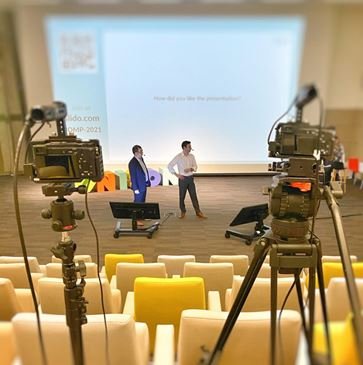The evolution of multimedia in entertainment has drastically transformed the way we experience movies, music, gaming, and more. From simple visuals and sound to fully immersive environments, multimedia has expanded the boundaries of what entertainment can offer. Over time, the integration of different media formats has redefined how audiences consume and interact with content.

Early Days of Multimedia in Entertainment
The change of multimedia in entertainment began in the early 20th century with silent films. Back then, multimedia was limited to moving images with accompanying live piano music to enhance the emotional impact of the scenes. As technology advanced, the addition of synchronized sound in the late 1920s revolutionized the film industry, giving rise to “talkies,” or films with dialogue and soundtracks.
With the advent of television in the 1950s, multimedia expanded beyond theaters and became a household experience. Television programming combined visual content, music, sound effects, and live performances to create a rich entertainment medium. This was further amplified by color television, which improved the visual appeal of multimedia content.
Radio also played a pivotal role in early multimedia entertainment. It provided a platform for audio dramas, music shows, and live broadcasts, laying the groundwork for the fusion of sound and storytelling. As multimedia continued to evolve, these formats laid the foundation for the future of interactive entertainment.
The Rise of Digital and Interactive Multimedia
The digital revolution in the 1990s marked a significant milestone in the evolution of multimedia in entertainment. The transition from analog to digital media opened up new possibilities for interactive content. Video games, which previously relied on simple graphics and sound effects, became more immersive as technology allowed for the integration of complex visuals, audio, and interactive gameplay.
Multimedia also transformed the music industry with the introduction of MTV in the 1980s, where music videos combined audio and visuals in a new format. This concept of merging music with video content created a dynamic form of entertainment that redefined how audiences consumed music. Similarly, with the rise of personal computers and CD-ROMs, multimedia content such as educational programs, interactive games, and video-based software became accessible to a broader audience.
The rise of the internet further propelled the evolution of multimedia in entertainment. Streaming platforms like Netflix, YouTube, and Spotify changed how people consumed movies, TV shows, and music. Audiences no longer had to rely on traditional media outlets; instead, they could access multimedia content on demand. This shift dramatically expanded the availability and diversity of entertainment options.
Multimedia and Immersive Experiences
In recent years, multimedia in entertainment has evolved to create fully immersive experiences through virtual reality (VR) and augmented reality (AR). These technologies represent the cutting-edge of multimedia’s evolution in entertainment, offering users the chance to engage with entertainment content on an entirely new level.
Virtual reality gaming, for instance, combines 3D graphics, spatial sound, and motion-tracking to create environments where users can physically interact with the game world. Similarly, augmented reality blends digital elements with the real world, enhancing live experiences. A prime example of this is the mobile game “Pokémon Go,” where players interact with virtual creatures in real-world locations.
The use of multimedia in live performances has also advanced significantly. Today, concerts and theatrical performances often incorporate holograms, interactive lighting, and digital backdrops to enhance the audience’s experience. As multimedia technology continues to evolve, the possibilities for blending reality and virtual elements are virtually limitless.
Conclusion
In conclusion, the evolution of multimedia in entertainment has taken the industry from simple black-and-white silent films to fully immersive digital environments. The integration of sound, visuals, and interactive elements has transformed how audiences experience content, offering richer and more diverse forms of entertainment. As multimedia technology continues to evolve, we can expect even more groundbreaking innovations that will reshape the entertainment landscape.











